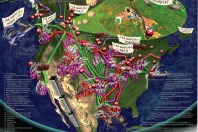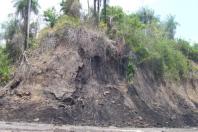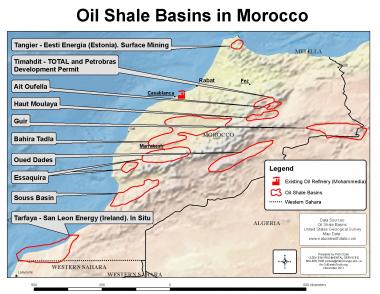Morocco
The plot:
The Kingdom of Morocco, a relatively poor country, has large reserves of oil shale that contains kerogen. Within the country there are many proposals for development into synthetic oil or directly burned for electricity coming from international energy companies. Morocco, alongside Jordan, is a hisotrically oil -deficient nation-state that plans to extract oil from shale and has recently been invited into the Gulf-Cooperation Council. Foreign investors have praised the lack of environmental regulation associated with Morocco's burgeoning synthetic oil industry.
The details:
There are ten main deposits throughout the country, one of the largest straddles the border of (and sometimes crosses into) Western Sahara.
Estimates are of over 53 bn bbl of oil in place throughout Moroccan controlled territory. Plans are for large electricity generating power plants as well as extraction of oil from shale-rock.
Mining is the primary focus of development plans. The majority of deposits are shallow and require mining technology similar to tar sands and other oil shale mines.
In Situ is planned for the Tarfaya deposit in the south partially in Western Sahara.
For major developments TOTAL and Petrobras work in tandem (as they do elsewhere) supplying technology from both Canadian tar sands operations, as well as “Petrosix” shale into oil technology commercially applied in Brazil.
Eesti Energia plans to bring oil shale-burning power plant technology (Enefit) from Estonia. Currently the two largest shale power plants in the world are operated by EE in Estonia, and EE intends the next largest to be constructed in the Hashemite Kingdom of Jordan.
San Leon Energy of Ireland is also involving EE to help refine shale kerogen into synthetic crude in the In-Situ plant planned for Tarfaya.
For oil from shale production, estimates are that up to 50 000 bpd could soon be produced in Morocco (perhaps involving the refinery near Casablanca). This number does not include the amount of shale mined and burned at the shale powered electrical plant in the North of the country.
Morocco has a potable water problem, as well as a crisis of deforestation. Expansion of these industries will only exacerbate these issues, while integrating Morocco into the regions energy supplier model. Western Sahara is still occupied by Morocco and part of the Tarfaya deposit is in occupied territory. Greenhouse Gas Emissions are expected to climb exponentially with such developments.
The Gulf Cooperation Council is integrating the Kingdoms of Jordan and Morocco into the pro-US monarchy club via oil production. The solidification of the expansion of the GCC seeks to involve oil supplies and free market policies into a regional alliance that has struggled against the Arab Spring.



